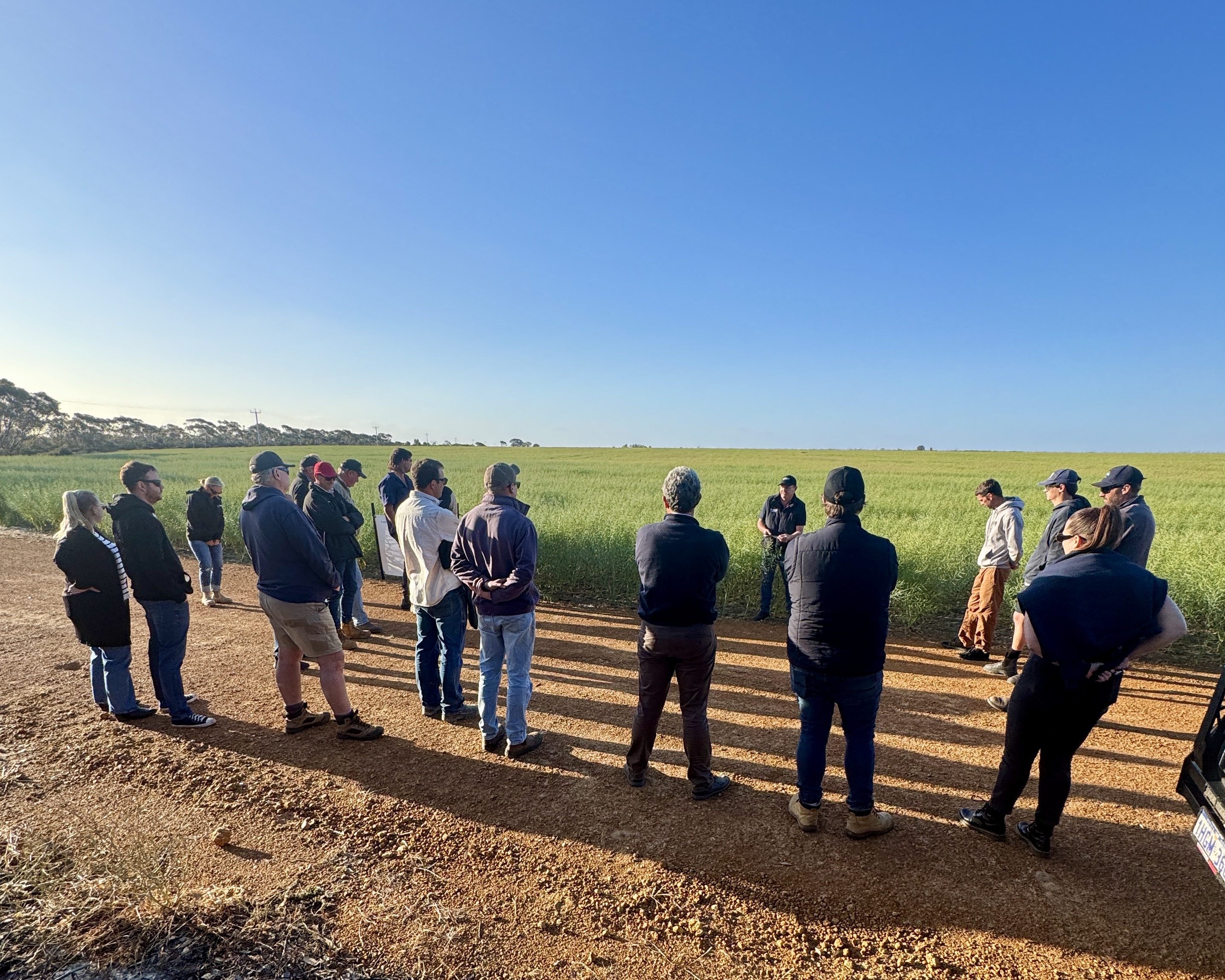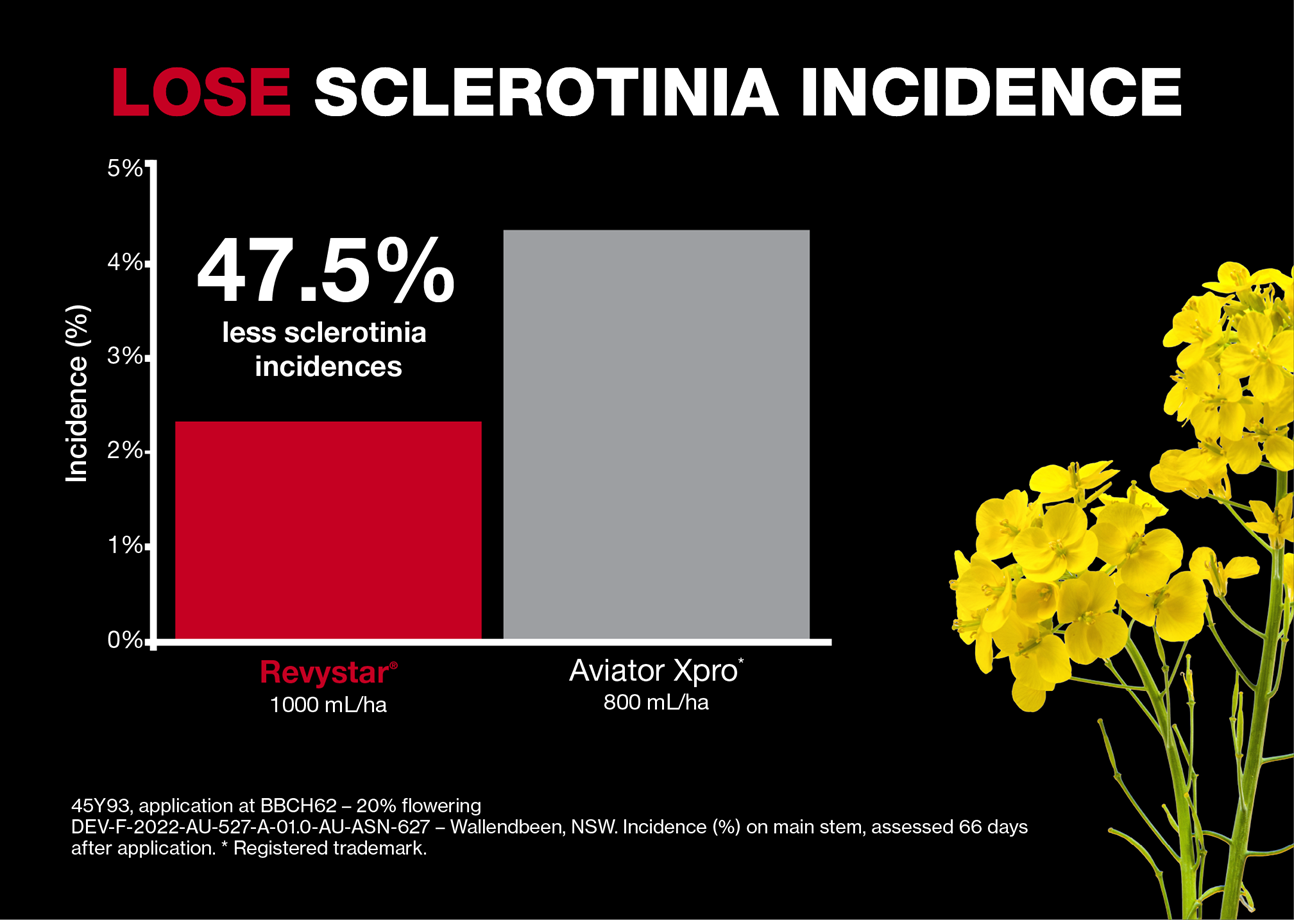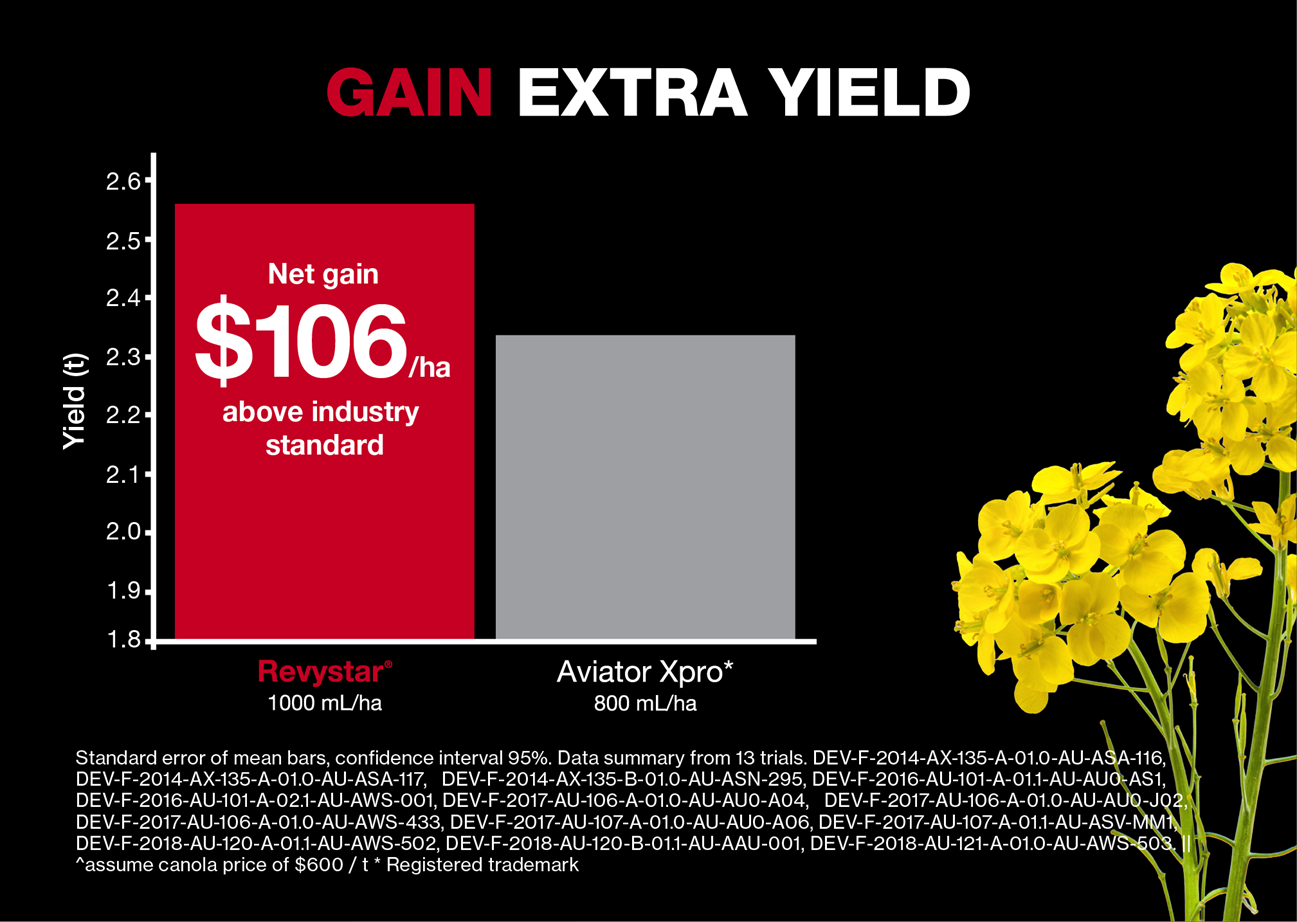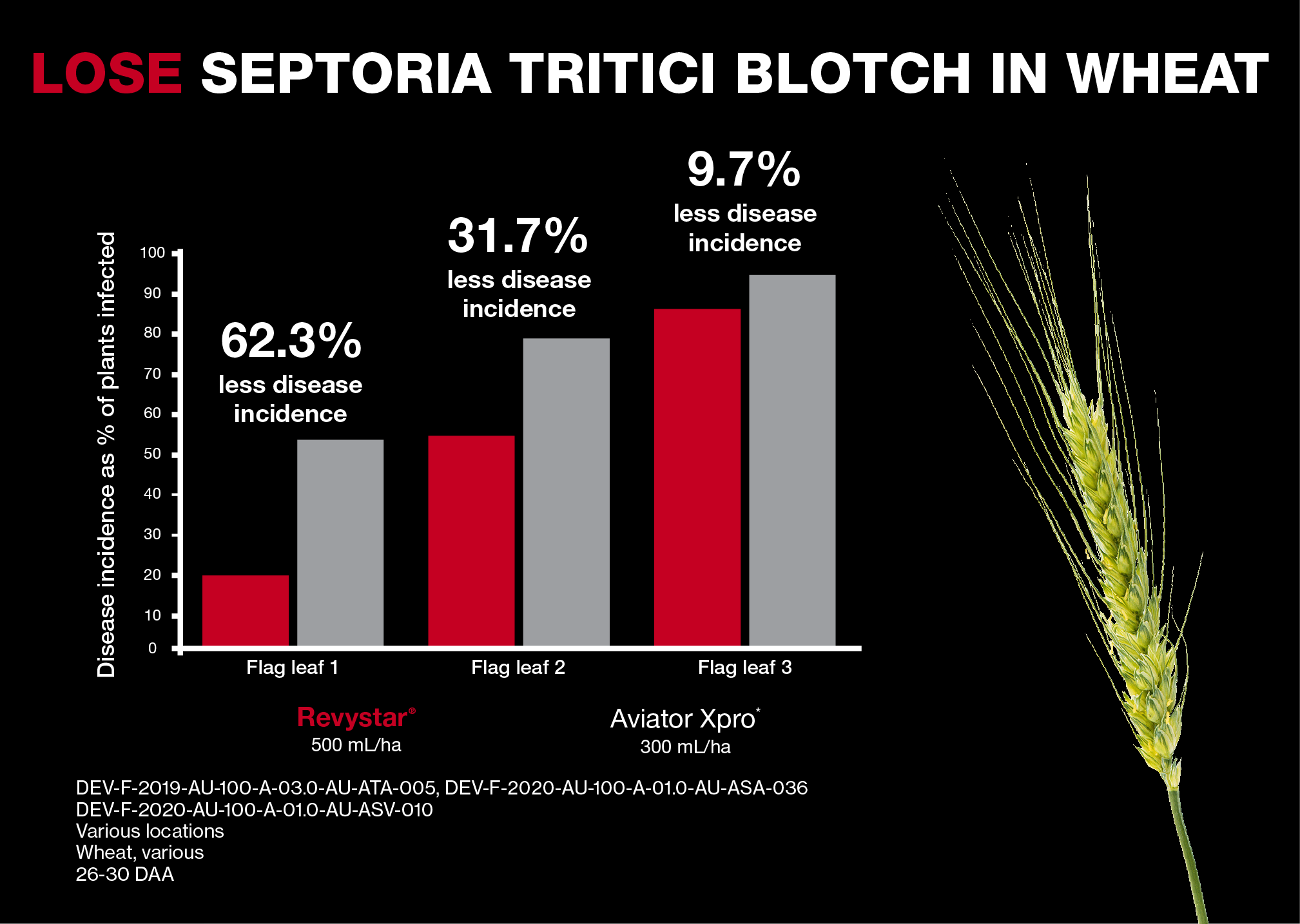Revystar® delivers proven returns in canola – and is primed to perform in cereals in 2025
New trial data demonstrates Revystar as the best fungicide choice for tackling sclerotinia in canola, Septoria tritici in wheat and net form net blotch in barley.
By Roger States, Crop Systems & Innovation Lead, Agricultural Solutions, BASF Australia
In today’s volatile and high-stakes farming environment, consistent crop protection isn’t a nice-to-have, it’s a business imperative. With unpredictable weather patterns, shifting disease profiles and rising resistance concerns, growers need solutions they can rely on to deliver both protection and profitability.
That’s where Revystar is making a difference. Registered by the APVMA ahead of the 2024 winter cropping season, the co-formulation has demonstrated outstanding efficacy in canola and now looks set to make a major impact in cereals in 2025.
Trial results: Profitability proven in canola, benchmark raised in wheat and barley

In its first season, Revystar set a new benchmark for sclerotinia and blackleg control in canola. Across 13 replicated trials, it reduced sclerotinia incidence by 47.5 per cent more than the industry standard. That translated to a substantial increase in profitability: a net gain of $106 per hectare above industry standard, based on a $600 per tonne canola price.
Importantly, those results weren’t limited to disease reduction alone – they delivered clear on-farm profitability. For growers weighing input costs against returns, Revystar® offers strong, quantifiable value.
Now, the latest trials show Revystar is just as effective in wheat and barley. In independently run trials, the product delivered superior and longer-lasting control of Septoria tritici blotch in wheat and net form net blotch in barley, some of the most economically damaging cereal diseases in Australia. These results position Revystar® as a standout performer in cereal rotations.




Revystar at a glance: Built for reliability and performance
Revystar is a dual-active fungicide that combines two of BASF’s proprietary molecules:
• Revysol: a flexible and powerful Group 3 (DMI) fungicide with enhanced binding to fungal pathogens, including resistant strains.
• Xemium®: a highly systemic Group 7 (SDHI) active that delivers long-lasting protection.
Registered for use across canola, wheat, barley and oats, Revystar brings broad-spectrum protection and resistance management benefits to the paddock.
Why it works: Technical strength and next-generation resistance protection
The strength of Revystar lies in its unique chemistry. At the heart of its performance is Revysol®, a next-generation Group 3 DMI featuring a unique isopropanol azole structure. This flexible molecule has a distinctive “neck” that enables exceptionally strong binding to the target site on fungal pathogens, even those with mutations that typically reduce the efficacy of older DMIs like prothioconazole or tebuconazole.
This binding flexibility improves control of resistant strains and provides longer residual protection, giving growers a valuable tool in the fight against resistance. Combined with Xemium, BASF’s proven SDHI, the co-formulation delivers both broad-spectrum activity and extended protection across a range of key diseases.
Current registrations cover:
• Canola – Sclerotinia and blackleg (both seedling and upper canopy)
• Wheat – Septoria tritici blotch, Septoria nodorum and more
• Barley – Both forms of net blotch, scald, rust, powdery mildew and ramularia
• Oats/oaten hay – Red leather leaf and Septoria leaf blotch
What it means for growers: Practical application across crops
Revystar fits flexibly into a range of crop rotations. In canola, it is typically applied at early flowering to protect against sclerotinia. In cereals, it delivers its best results when applied preventatively or at early signs of disease pressure.
Growers and agronomists should consider Revystar in fungicide rotation programs, particularly where managing resistance to older Group 3 DMIs is a priority.
Looking ahead: Building a sustainable fungicide toolkit
Growers who used Revystar in 2024 are already planning to incorporate it again this season, based on strong results and early feedback.
As BASF continues to invest in crop protection innovation, Revystar is just one part of the company’s broader strategy to help future-proof Australian farming systems. A second co-formulation, pairing Revysol with a Group 11 strobilurin, is already in development, offering growers even more choice in managing disease and resistance.
Growers planning for 2025 are already looking to Revystar® to protect more than just yield – they’re using it to protect long-term farm resilience.
Visit crop-solutions.basf.com.au to explore Revystar’s trial results, crop guides and application tips, or speak to your local BASF representative.
